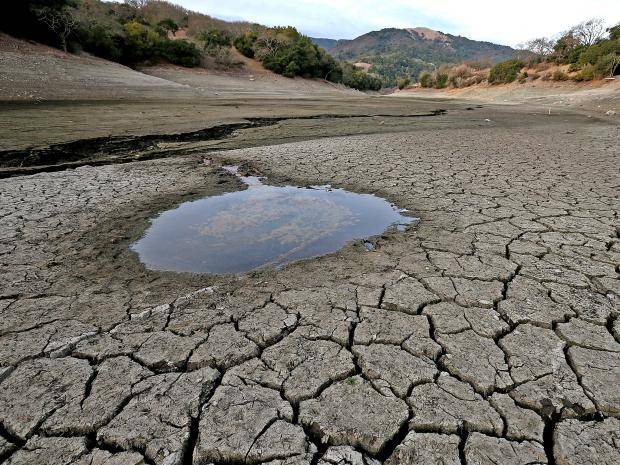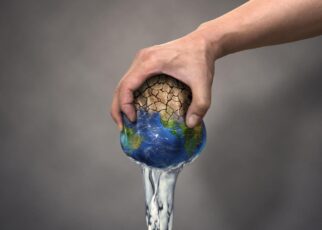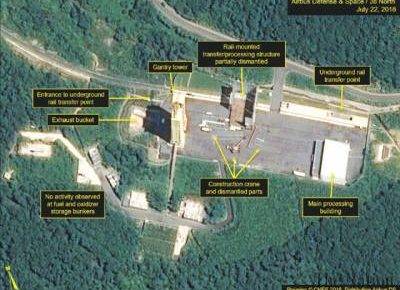Water is the basis of life, human survival, and all other living creatures are depended on water. Air, water, and fire are three vital elements of nature. The earth is covered by four-thirds of the water. Earth has the distinction of being the only planet in the entire solar system to have water, and water has the reputation of being the only element to have brought biomass! Water is a constant quantity in nature, naturally changes systematically from one state to another (solid, liquid, gaseous).
With this cyclical process, water maintains the survival of the organism and protects itself. Nature, with its immense biological and inanimate resources, has been balancing itself for billions of years. Millions of organisms are interdependent but the interference of humans in the natural habitat has disrupted multiple things including the water itself.
Global warming is steadily increasing along with pollution. The imbalance in the atmosphere is due to human involvement rather than any other. The rainy season is extending its wings and the seasons are constantly changing. Natural disasters such as hurricanes, floods, and droughts are rampant as heavy rains increase. The atmosphere on Earth is abysmal. Mankind is struggling to survive as disasters continue to plague the earth’s environment.
A desperate threat to biodiversity is increasing. If the damage that did not accrue in millions of years has had a big chance to occur in the last millennium. Climate change did not happen overnight as man started taking advantage of the natural resources and started minting out of them. In the last four hundred years, industrialization has revolutionized, the contamination has increased and most importantly, the developments of the past three decades have led to serious ‘climate change. There is a lot of pressure on water resources around the world. It is through water that the negative effects of climate change seem to have struck! Two major challenges posed by rapidly sinking climate change are one-water, and two-food, the production, and distribution.
Read More: Air Pollution: The new threat for human survival; 70 lakh deaths per year!
The initial civilizations were born and raised in valleys centered on water resources, but we have come a long way from there to a place where water availability is now under severe pressure.
The reason why water is so complex is that it is linked to the progress and development of all living things as well! In addition, the earth’s ecosystem survives due to various forms of moisture, particularly water too.
One-third to four-quarters are covered by stagnant water, but in the deep and wide oceans, there is a stagnant body of water. Although freshwater makes up about 3% of the total, it is not available to two-thirds of the poles, others in the form of ice, vapor, and moisture in the air.
Even the limited freshwater resources available are gradually becoming extinct and polluted, leading to severe waterlogging. The situation is similar on all continents. Freshwater is essential for our drinking, cultivation, and industrial needs as well as for ecological and biodiversity survival.
Water turbulence is present throughout the world including the developed communities. Africa, Arab and Asian countries are mainly economies with close ties to natural resources. Forests, agriculture, and fisheries are all water-related issues. Globally, on the one hand, the population is growing, on the other hand, water resources are depleting, and waterlogging is becoming a major concern.
In Africa (sub-Saharan Africa), some Asian (semi-tropical) countries are projected to receive 10 percent less rainfall by 2050. It has a negative effect on food production. The World Health Organization reports that by 2025, half the world’s nations will face severe water shortages. The four main effects of ‘climate change’ are (1) desertification, (2) hurricanes, floods – droughts, (3) damage to agriculture, and (4) food production.
Water resources are being polluted due to human negligence despite the seriousness of the situation. Ponds, ditches, lakes, rivers, underground networks, and finally the oceans are being polluted with sewage, industrial waste, and toxic chemicals. The use of polluted water for agriculture and drinking is seriously damaging the health of living beings.
Tens of millions of people die each year from water-borne and contagious diseases. Most deaths can be prevented by simply providing safe drinking water. Protected drinking water can empower a whole generation, not just a family, from children to adults.
Children, women, and the elderly are the first to be affected by the drinking water problem. In social terms, the poor, the downtrodden – the weaker sections. Drinking water is a natural resource that triples not only the health status of a community but also its economic status. 77 crore people (one in every ten) in the world suffer from severe drinking water shortage. 170 crore people (one in four) do not have access to latrines. Lack of safe drinking water and a clean environment is the main reason for the growth defect of millions of children as every two minutes a baby dies due to waterborne diseases!
Research has shown that the value of labor (especially women and children) in providing drinking water is equivalent to $ 260 billion a year. Two-thirds of the world’s population will be severely waterlogged by 2025 as a result of climate change, depending on current drinking water consumption. Protected drinking water is the mainstay of the health economy in India as well. Waterborne diseases alone cost about Rs. UNICEF estimates that it is carrying a financial burden of Rs 4,500 crore.

Even half the population in the country does not have access to safe drinking water. Especially rural India. Two-thirds of the districts are facing severe waterlogging. There are no proper plans to provide uncontaminated water. Rapidly falling groundwater levels are another challenge. This is due to the fact that 3.5 to 4 crore bore wells meet the drinking water requirements of rural (85 percent) and urban-urban areas (48 percent).
Natural disasters such as global warming, climate change, hurricanes, floods, and droughts have put drinking water resources under severe stress. Rivers, lakes, ponds, ditches, groundwater, and other resources are being adversely affected. Conditions are deteriorating due to drying out or contamination. More than half of the swamps and wetlands have disappeared.
Rising food production requirements due to population growth and increased water use for agriculture are also leading to drinking water shortages. According to global reports, 80 percent of natural water resources are polluted by industrial effluents, post-agricultural toxins, and other effluents.
Depletion of drinking water sources, contamination of existing water, and declining availability are the main causes of both types of health problems. Diseases such as diarrhea are some of the immediate health problems while others are chronic diseases, resulting in permanent health problems.
Plans and projects for agricultural purposes have led to the formation of large-scale reservoirs in India to meet the drinking water problem and cultivation problem to some extent. Compared to the past, centralized protected water systems have been strengthened from decentralized protected freshwater. Most cities have specific water supply systems.
Once upon a time citizens were not so dependent on governments for drinking water. They would walk miles to fetch water from rivers, ponds, or even dig up wells for water resources but they now rely heavily on integrated protected water supply systems or private supply systems.
However, repairs should be made immediately. Otherwise, the situation will be so complicated that the villagers will have no village to live in. Water conservation and rainwater harvesting are very important and not only the Government but also the people should take a step to do what they ought to do for a better tomorrow.

Natural disasters that threaten the survival of the world’s species Biodiversity – Droughts. The persecution has been particularly severe over the past two decades. Eighty-seven percent of the disasters that occurred between 2001–19 were serious. These developments are the result of climate change caused by global warming. The latest report by the United Nations Intergovernmental Panel on Climate Change (IPCC) says the same.
The whole world recognizes the urgent need to be alert and warns human society with a ‘code read’. The reports said the Indian Ocean was warming faster than other oceans, resulting in extreme weather conditions in South Asia, especially in India. Therefore, the drought is high during the year.
Drought can adversely affect agriculture and reduce yields. It will grossly hurt the food production-supply-distribution network. In semi-arid regions like India, there is a risk of declining food production. Signs are also emerging that by 2035, 75 percent of the ice in the Himalayas will have melted.
Droughts and floods are already wreaking havoc on all continents, causing immense loss of life, immeasurable loss of property and resources. The forests are raging in the fire a prolonged cause of droughts. Evergreen forests such as the Amazon, as well as forests in areas such as Australia and Siberia, have been a source of concern.
Extreme levels of rainfall – Extreme levels of flood danger were announced in China, Japan, Indonesia, Korea, France, Germany, India, and the United States.
In the past year, the world has seen more floods than ever been. From New York City, Germany to Chennai we have witnessed the deadliness of the climate.
Flood doesn’t only bring the water with it but a lot of hardships including loss of life, property, and crops.
An atmosphere of harmony can only survive with a spirit of cooperation. All the major rivers in the country flow into the seas through different states. Disputes often arise between different states over the distribution and use of river water. They cause rivalries, provoke political tensions and regional sentiments and cause social unrest. Sometimes regional preference is also becoming detrimental to national interests. The whole country is roughly divided into river basins.
Decisions on river water storage, management, and utilization can be taken and implemented by the respective state governments. There are disputes between the upper and lower states over the construction of projects, water storage, and consumption. When such disputes arise the power to resolve the issue through conciliatory negotiations and agreements is vested in the Central Government by Article 262.
Reconciliation should be achieved by setting up river boards and tribunals. Conflicts and rivalries between states over river waters have existed since the country gained independence. It is customary for them to intensify in the future, with new problems arising and complicated with the construction of new projects.
The Central Government sought to resolve these disputes by bringing in Parliament the Interstate River Disputes Act – 1956. It set up boards with statutory powers and special tribunals with judges. The Supreme Court, the highest court in the country, reviews the tribunal’s judgments, for and against appeals against them, with the powers vested in it by Articles 131 and 136 of the Constitution, and seeks to resolve water disputes. These tribunals were formed for the Godavari, Krishna, Narmada, Kaveri, Vansadhara, Mahadayi, and Mahanadi. A second tribunal was also set up for Krishna.

There are also cases where the judgments of the respective tribunals are not enforced by the respective states. The Supreme Court has to intervene and take immediate remedial action in emergencies where the dispute is complicated and affects the daily needs of the general public. The distribution of shares between the respective states is determined by the geographical area of the river basin and the availability of water. In addition to the share of net water available, the lower states are also given some rights over the surplus water.
In the case of rivers like the Kaveri, which is adjacent to the Krishna River, disputes between the respective states are natural when water availability is low and demand is high. The dispute over the waters of the Krishna River was between Karnataka and the joint Andhra Pradesh. After the partition of the state, it has now become a (trilateral) conflict between Karnataka, Telangana, and Andhra Pradesh.
In the five states, problem-solving becomes very delicate when different political parties are in power at the center. Conflicts provoke tension when one’s interests are tied to another’s attitudes. The antidote to this is the demand for the establishment of an Independent – River Valley Authority with statutory powers. These institutions make decisions based on meteorological developments across states and regions. From the origin of the river to its confluence with the seawater, project management is within their purview.
Only 28% of the wastewater in our country is treated and discharged to the water bodies. The remaining 72% is discharged into rivers, canals, and lakes without treatment. Only plants capable of treating 44% of the city’s wastewater are still in place. Not all of these plants work, either. Between 2014–15 and 2020–21, the volume of wastewater increased by 17%.
By 2050, half the world’s population is expected to be concentrated in cities! If that happened then we would all be in big trouble. The World Partnership (COPE) recognized the water crisis as early as the Paris Environmental Summit in the wake of the water crisis complicated by climate change. All nations have laid the groundwork for specific activities such as water resource conservation, disaster management, adjustment, and correction in their ‘National Commitment’ (NDC).
However, the ‘COP-26’ (Glasgow) conference, which needs to review its latest situation, has gone astray as a virtue of corporate lobbyists. The 6th Sustainable Development Goals (SDGs) set by the United Nations do not pay enough attention to the implementation of ‘water-sanitation’ and national policies. In our country except for the quest for the construction of big projects that pose a risk to the environment and nature, the focus is on alternatives.
Climate change can be tackled through measures such as efficient management of small check dams, ponds, and rivers, conservation of moisture, raising groundwater levels through water conservation, and promotion of natural farming. At 16 percent of the world’s population, we have only 4 percent of water resources!
if the states or countries don’t stop quarreling amongst themselves and start implementing ways to conserve and distribute water we would not have to go to World War III where we have to kill each other to get water.
Also Read: IMF warns El Salvador legalizing Bitcoin; states illegal
Discover more from Thenewsdoor
Subscribe to get the latest posts sent to your email.






2 thoughts on “By 2050, half of the world’s population would not have access to water”